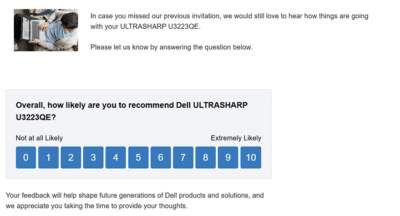When a new visitor first loads your page, there is an anticipation. Something brought them there – a headline, a related link from an article that piqued their curiosity.
Competing with that is their innate fight vs flight instinct aka is this page trustworthy or not. Will it live up to the promise that brought them to this page?
Ads, pop-ups, bad UI all trigger the flight instinct – unless this is the only place they can get this content – which leads to visitors leaving with a poor overall impression, never to return.
So how do you meet your business goals while not scaring away your visitors. Here are 8 strategies – from top to bottom – that will ensure you deliver a great customer experience while enticing them to take action that moves your business forward.
1. Familiarity
As mentioned above, when a visitor first arrives on an unfamiliar site, their innate fight vs flight instinct kicks in. Soon as the page loads, your visitor is looking for clues to stay or leave.
Think way-finding – when you are hiking and your trail hits a V – your brain is pretty good at quickly figuring the sketchy vs. the good option, most of the time. The same instinct kicks in here.
The first thing your reader will look for is a matching page title that tells them they’re on the right page. Then they’ll scan the initial page to see if the layout is familiar/matches expectation (navigation, content area, sidebar, ads etc.)
**Solution**: Ensure your page layout has clearly marked zones for navigation, content, advertising and related items. Keep it familiar. ‘Innovation’ here usually leads to lower engagement and conversion.
2. Ease of Getting Started
When your reader landed on the page, they expected to engage with your content – read an article, watch a video, click through a slideshow…
They did NOT come to do any of the following
- See all the articles you’re featuring in your cool slider
- Watch OR interact with a display ad
- Sign up for an unrelated ‘life-changing’ FREE product
- See all the related articles – some with spinning GIF images
- Sign up/login – just to be able to read the article
How many such roadblocks exist today on your page before your reader can get started. The greater that exist, the greater the annoyance matched by even faster trust reduction.
SOLUTION: Allow the user to get started before interrupting them with something. Preferably only once they are below the fold, since scrolling is no longer an issue today.
3. Do your subhead and abstract convey a clear payoff
The title brought your reader here, do the sub-head and the abstract pay it off? This clearly falls in the realm of copywriting but it is the place where another quick decision will be made to scan or read?
Response to an enticing abstract
"Looks promising, let me read this".
John Doe Tweet
Response to a boring or cliched abstract
"This doesn't tell me anything, I'll do a quick scan to see if its worth reading/saving"
John Doe Tweet
The second mindset will engage less, and will try and find something else that might be interesting or move on to the next thing on their reading list.
SOLUTION: Clearly spell out the benefit of the article, or create an open loop (attention catching statement, question etc.) that gets the reader to engage rather than scan.
4. Attention hooks around the fold
{chartbeat image}
The fold plays an outsize influence even today when long scrolling pages have become the norm. Old habits are hard to break, I guess. This study shows how nearly all the engagement is at the fold or below.
Subconsciously it seems people decide to scroll down if they think they’ll find valuable information further down the page, or if they were in the middle of reading something engaging.
SOLUTION: The golden rule of a 580px / 600px fold still applies as the fold marker. Ensure that the content at that mark is engaging enough for people to scroll down.
5. Clear flow or distractions?
A lot of times the annoyances really multiply once you are below the fold. This usually happens just as Your reader has just begun relaxing and getting into the article’s content.
And then one of the following happens.
- Standard display ad unit – static
- Google ad-sense row
- Standard display ad – animated/video
- Pop-up lightbox – email opt-in, free ‘stuff’
- Busy sidebar with multiple widget blocks, some animating
These are organized from least to most annoying. The more the annoyance(s), the less the reader is able to relax and enjoy the content which keeps the flight instinct high.
Then there is conversion. Typical blog conversion stands at an abysmal 0.25%. The more you annoy your reader, the less likely they are to further engage with you.
SOLUTION: Think carefully about the ONE outcome you want from your reader and focus on that.
6. Conversation aka Comments
{theverge image}
If you have been reading blogs lately, hiding/collapsing the Comments is becoming more prevalent. I suspect it has something to do with getting the reader to read another article, rather than read or participate in the comment thread.
While that’s a short-term gain, people actually get more value some times out of the comments than the actual article, especially if the author is participating. And they return because of the conversation, not just the content. The Moz blog is known across the SEO industry for its great content AND conversation.
Take this recent example here – the comments really enrich the article, and deliver an emotional connection – the strongest force there is that makes a reader come back.
SOLUTION: Make participation easy and clearly visible. If you have to minimize its priority, show only the top/first few comments with a way to see all.
7. What's next
The bottom of most pages feel like a mishmash of stuff thrown together in the forlorn hope that the visitor will find one item of interest and stay on your site.
Ultimately shiny objects win. If your visitor just finished reading something that was mentally taxing, like this article, the pull of an escapist article from the likes of Buzzfeed and the like is too much to resist. And like that your visitor is gone.
SOLUTION: Give your visitor a break. This is the moment to get them to sign up to your newsletter so they can continue to receive great content from you.
And then fire up the next article. If they don’t find it interesting, they’ll use the sidebar and find one themselves.
Getting visitors to your site is hard work. Keeping them engaged in today’s world of micro-distractions is harder still. But if you don’t do that your chances of getting business-related outcomes are miniscule.
If you follow one or more of these strategies, you’ll start to see tangible improvements in your KPIs. And you will start earning their trust.
Download 21 item Checklist
Get this as an actionable checklist by signing up to Bite-size UX email newsletter below.
Every week, you’ll get a bite-size email featuring one strategy or insight around customer behavior, research, workflow and design that you can apply right-away to succeed with your product or service.





Comments
Comment policy: We love comments and appreciate the time that readers spend to share ideas and give feedback. However, all comments are manually moderated and those deemed to be spam or solely promotional will be deleted.